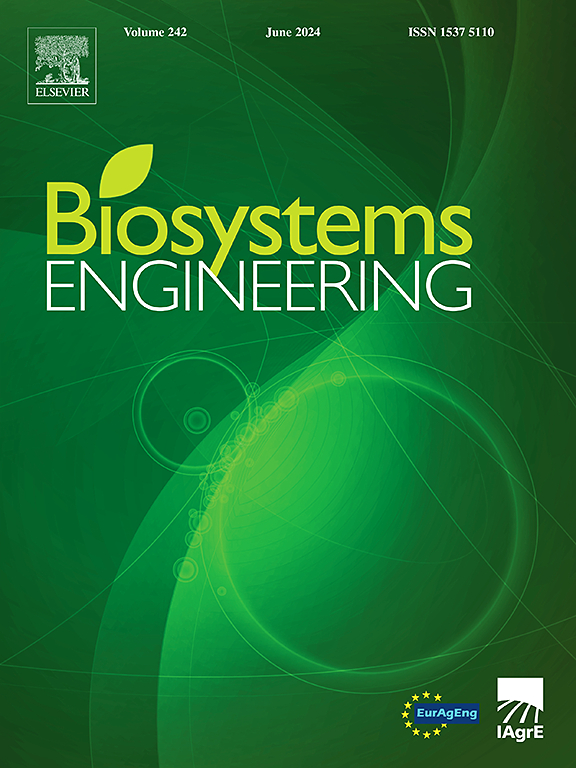Full-scale experiment on the interaction of two neighbouring low-rise insect-proof nethouses with the wind
IF 4.4
1区 农林科学
Q1 AGRICULTURAL ENGINEERING
引用次数: 0
Abstract
Insect-proof nethouses are low-cost permeable structures covered with high density anti-insect nets, which can provide efficient protection against harmful insects and environmental hazards and regulate the microclimate in favour of the protected cultivation, especially during the summer period. A full-scale experiment of two neighbouring low-rise insect-proof nethouses without cultivation was employed for the analysis of the wind velocities windward, leeward and at the interior of the insect-proof nethouses. Moreover, the wind pressures exerted on the structures were investigated. Two different types of novel insect-proof nets were used as covering materials: The 3353BT Biorete AirPlus 50 mesh with a mesh configuration that allowed for improved air exchange rates; and the OptiNet 50 mesh that provided optical exclusion of pests through incorporated additives that block specific ultraviolet (UV)-visible radiation wavelengths. Anemometers installed at different locations on the field were used to measure the velocity reduction inside and leeward of both nethouses. Specially designed pressure differential sensors were used to measure the wind loads at the nethouses' windward and leeward sides. Velocity reduction inside the AirPlus nethouse was equal to 44%, while for the OptiNet nethouse (denser mesh) this value was equal to 62%. Lower net pressure coefficients were recorded for the windward side of the enhanced ventilation technology AirPlus insect-proof net (CP = 0.36) as compared to the denser OptiNet net (CP = 0.47). Contrarily, at the leeward sides of the nethouses the difference between the net pressure coefficients was insignificant (AirPlus nethouse: CP = −0.26; OptiNet nethouse: CP = −0.22).
求助全文
约1分钟内获得全文
求助全文
来源期刊

Biosystems Engineering
农林科学-农业工程
CiteScore
10.60
自引率
7.80%
发文量
239
审稿时长
53 days
期刊介绍:
Biosystems Engineering publishes research in engineering and the physical sciences that represent advances in understanding or modelling of the performance of biological systems for sustainable developments in land use and the environment, agriculture and amenity, bioproduction processes and the food chain. The subject matter of the journal reflects the wide range and interdisciplinary nature of research in engineering for biological systems.
 求助内容:
求助内容: 应助结果提醒方式:
应助结果提醒方式:


